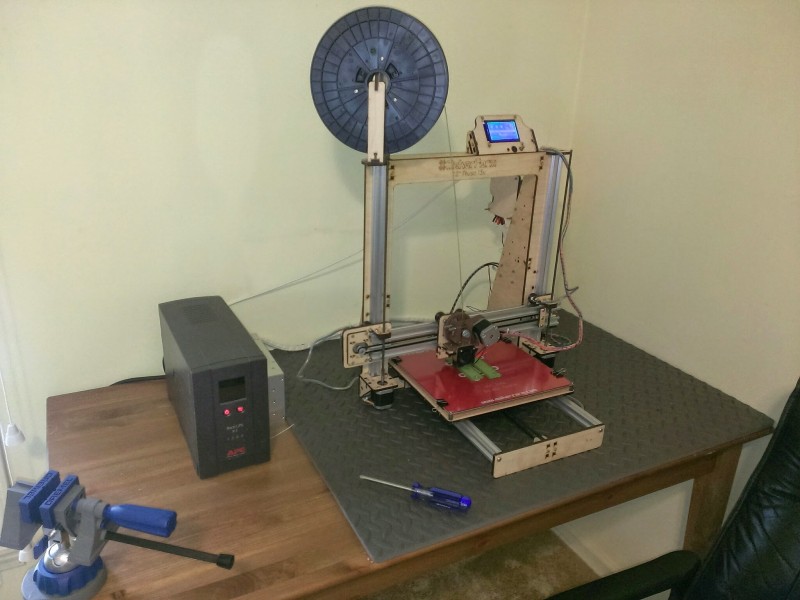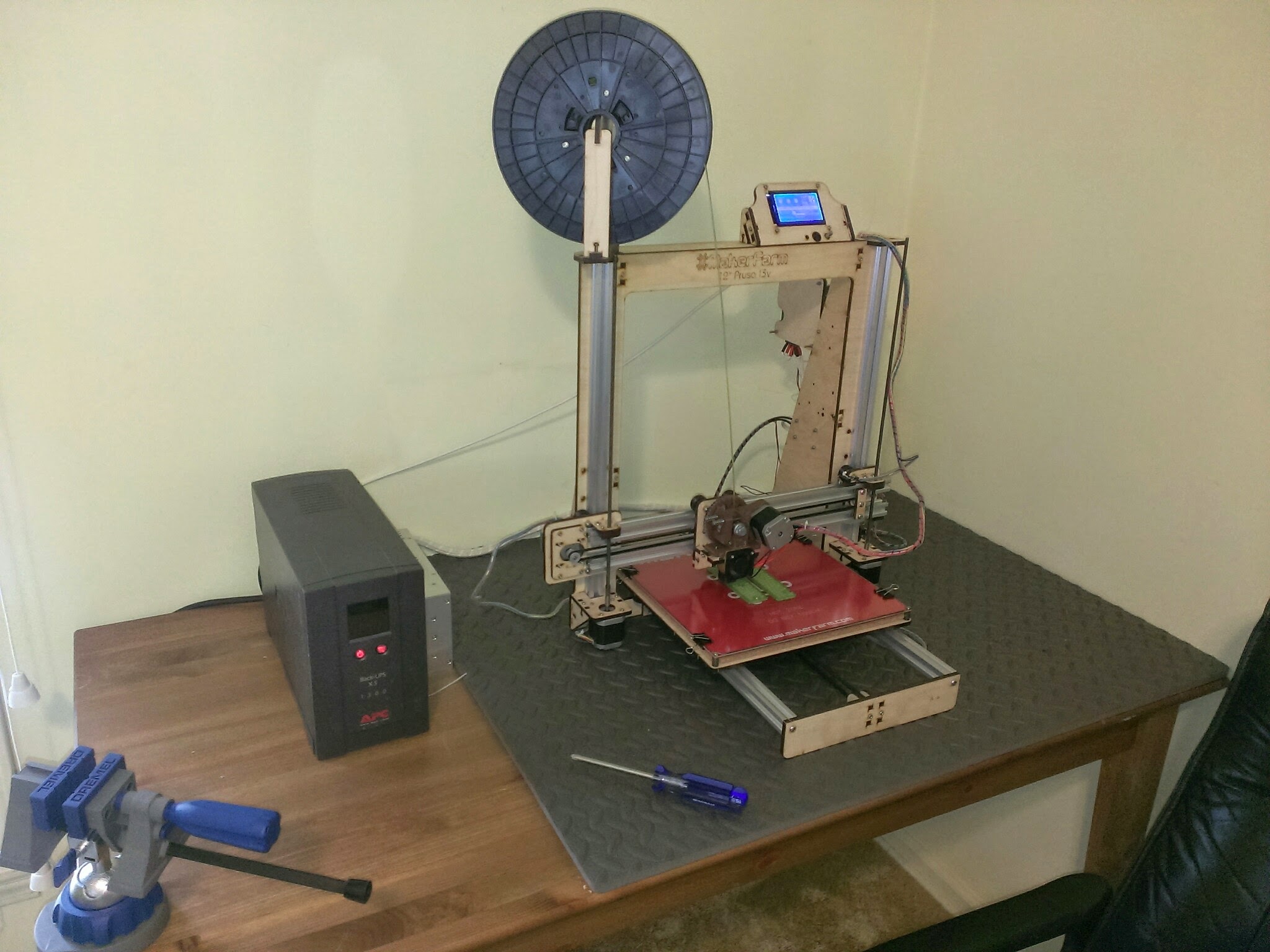I have been dreaming of owning a 3D printer for several years now. It was hard to justify the purchase of such an expensive hobby when I was still a slave to rent. Well, I finally bought my first home, so now I can justify it!
I still wanted to be conservative about the price point, and I didn’t want to miss out on any features. I decided to go with a proven printer that was also a kit. I went with the Prusa i3v 12 inch model. This model uses aluminum slotted rails for movement. I am not personally familiar with the rod models, but I have read my version can print faster. I also think it adds to the stability of the printer. Especially since the frame consists of laser cut wood.
So I ordered my kit from MakerFarm for roughly $700 USD. I added several rolls of PLA and ABS, so it was a little more. I also upgraded to us RAMBo electronics and a hexagon hot end (0.4mm).
So I ordered the printer and the waiting game began. There was a 10 business day lead time, so I had to patiently wait for my new toy to arrive.
During that time I read and researched every little upgrade I was going to do.
The printer arrived on time (maybe even a day early). I waited until the weekend to assemble it. I dedicated my entire weekend to assembling that printer. I read that it would take roughly 18 hours. I took a much longer time because I am a perfectionist about my assembly and wiring. I gave a lot of thought to every part assembled. I also utilized heat shrink to make every wire safe and clean looking. In the end my printer looks fantastic. Once I did finally get everything assembled and configured my first prints were so good. Makerfarm provided me with a configuration file that leaves very little room for improvement. It was extremely encouraging to see the results I achieved in the first few days.

I have made many improvements since I first assembled the printer. I am now using a 1/8th inch thick mirror glass with clipped corners for my print surface. I researched that the thin metal surface on a mirror helps distribute the heat from the heat bed more evenly. I am also utilizing an aero gel insulation under the heat bed. I implemented this because heat being transferred to the wooden frame was causing issues with warping. Now the aerogel insulation keeps virtually all heat away from the wooden surface. This means zero warping. Warping causes the y-axis to jiggle as well as distorting the print bed. The print bed is virtually impossible to get perfectly flat across all 144 square inches. I have a cure for that as well.
This problem is solved with a self leveling z-axis. I utilized some existing plans and models that I printed to accomplish this. A servo motor controls an arm with a sensor that detects the distance to the print surface. The servo is excellent because it allows the mechanism to pivot out of the way before a print. This method of setting the z-axis is preferred because it can be mapped in several points on the grid. This compensates for any warping in the print surface.
Another addition I made to this printer is a print cooling fan. This will improve both ABS and PLA prints. In order for me to be able to install this upgrade I had to reroute the hexagon hot end always on fan. It now sits under the larger extruding gear and pulls the air away from the print. This not only frees up room for the additional fan but improves the airflow. It requires an ultra tiny fan and a few custom mounting pieces. Everything was found on Thingiverse.
Some of the more basic things I did to improve my print quality were making sure that I had a stable surface to print on as well as providing a cushion to dampen any vibration.
I have also made a small change the the universal extruder. It was designed for both 3mm and 1.75 mm filament. Using a white Teflon tube I filled the gap and removed any room for filament to jam between the hobbed bolt and the hot end.
I am also hoping to print flexible filaments with this improvement. When I first started printing I had issues with the extruder losing grip of the filament. Luckily I overcame this issue by simply tightening the spring pressure mechanism forcing the hobbed bolt to have more pressure.
